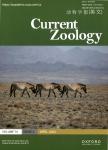Changes in Philornis infestation behavior threaten Darwin's finch survival
Changes in Philornis infestation behavior threaten Darwin's finch survival作者机构:School of Biological Sciences Flinders University GPO Box 2100 Adelaide 5001 Australia Department of Biology Lund University S61vegatan 37 Lund 22362 Sweden
出 版 物:《Current Zoology》 (动物学报(英文版))
年 卷 期:2014年第60卷第4期
页 面:542-550页
核心收录:
学科分类:0710[理学-生物学] 07[理学] 09[农学] 0904[农学-植物保护]
基 金:Australian Research Council Rufford Small Grant Foundation Mohamed bin Zayed Species Conservation Fund Max Planck Institute for Ornithology Royal Society for the Protection of Birds/ Birdfair Earthwatch Institute Australian Federation of University Women (SA) Charles Darwin Research Station Galapagos National Park Service TAME airlines community on Floreana Island
主 题:Host mortality Parasite size Darwin's finches Ectoparasitism Camarhynchus Geospiza
摘 要:The conservation behavior framework is useful to identify key linkages between behavior and conservation practice. We apply this framework to a novel host-parasite system on the Galapagos Islands and ask if there have been changes in parasite oviposition behavior and host mortality patterns across the first decade (2004-2013) of its known association. The Dipteran parasite Philornis downsi was first discovered in Darwin's finch nests in 1997 and is the biggest threat to the survival of Galapagos land birds. Host mortality has increased over the past decade. In Dipterans, pupation and pupae size are determined by access to host resources. Here, we test the hypothesis that P downsi flies are laying eggs in finch nests earlier in the nestling phase to maximize larval feeding time and therefore chance of pupation success before host death. The results show fewer 1st instar larvae later in the host nesting cycle in support of earlier egg laying behavior by female flies. Between 2004 and 2013, parasite intensity increased from -28 to -48 parasites per nest, host mortality increased from -50% to -90%, and host age at death decreased from -11 to -5 days. The earlier age at host death was correlated with fewer pupae (from -50% to -20%) and smaller pupae size (-10% decrease). Changes in parasite behavior reveal new fitness costs to both the parasite and Darwin's finches. These findings un- derscore the need for urgent conservation action to save Darwin's finches from extinction due to a novel, lethal and introduced parasite [Current Zoology 60 (4): 542-550, 2014].



